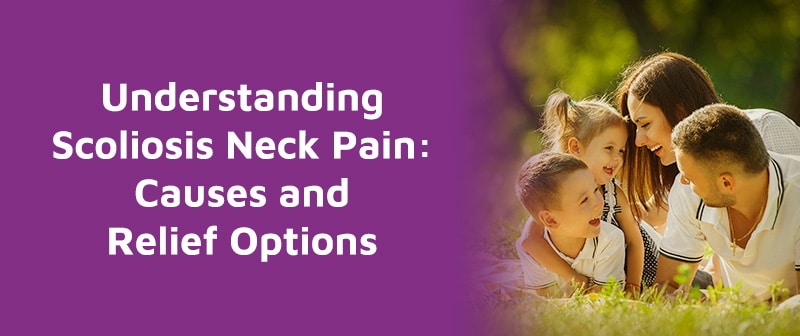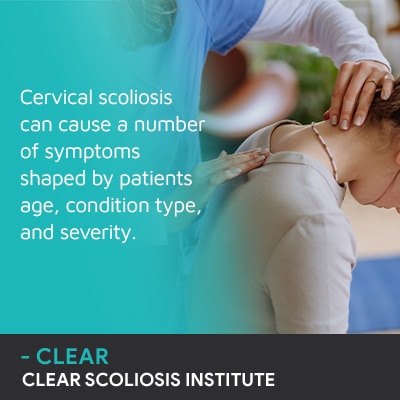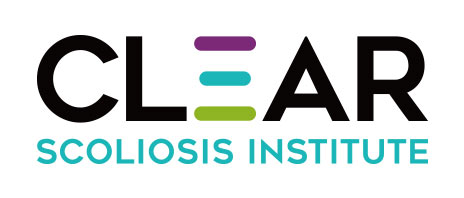
Not everyone with scoliosis will experience pain, but for those that do, pain medication only works for short-term pain management; when it comes to sustainable long-term pain relief, the underlying cause of the pain, the condition itself, needs to be addressed.
Scoliosis neck pain can develop if the cervical spine bends and twists unnaturally. Cervical scoliosis can also cause a reduced range of motion in the neck, headaches, and pain that radiates into the shoulders and arms due to nerve compression.
Scoliosis can develop in any spinal section, or in more than one, so let's start by exploring the three main spinal sections and the roles they play in spinal function.
There are three main sections of the spine, and each has specific roles to play in how the spine functions.
The lumbar spine refers to the lower back, and this spinal section has to support the weight of the sections above and the entire trunk; its vertebrae also feel the strain of bends, lifts, and twists.
Because of the essential roles of the lumbar spine, it's said that most people will experience lower back pain at some point in their lives.
The thoracic spine refers to the middle and upper back, is the largest spinal section, and the only one that attaches to the rib cage, so it helps protect important organs like the lungs and heart, and it also plays a key role in facilitating the torso's range of motion.
The cervical spine refers to the neck which, as the first spinal section, acts as the bridge between the brain and body and has many important functions.
The cervical spine has to support the weight of the head, facilitate the neck's range of motion and ability to move the head, it contains important nerves and blood vessels that feed the brain, protects the spinal cord, provides muscle attachment for the neck and upper back, and helps absorb shock from movement and impact.
So considering the many important roles of the cervical spine, how does a condition like scoliosis affect it?
Scoliosis is a structural spinal condition but its effects aren't isolated to the spine alone. Scoliosis can affect the spine's immediate surroundings (muscles and nerves) and the entire body; a misaligned spine can disrupt the entire body's balance and symmetry.
Scoliosis causes the spine to bend unnaturally to the side and rotate, and as a 3-dimensional progressive condition, it needs to be taken seriously and treated proactively.
Scoliosis can develop in any of the spine's main sections, or in the case of a combined scoliosis and/or a double-curve scoliosis, it can involve multiple spinal sections.
So a diagnosis of cervical scoliosis means the neck has developed an unnatural and unhealthy sideways-bending curve that also twists (rotates).
No two cases of scoliosis are the same which is why treatment plans need to be fully individualized.

Patient age is a key factor because as a progressive condition triggered by growth, we know that children are more at risk for progressing quickly.
We also know that scoliosis doesn't become a compressive condition until growth has stopped; once skeletal maturity has been reached, this is when conditions tend to become painful as the lengthening motion of growth that counteracts compression is no longer occurring in adults.
So patient age also indicates how much of a focus pain management will need to be in treatment.
Condition type is determined by the cause, and while we don't know why most cases of scoliosis develop (idiopathic), we do know how to manage the condition effectively, and cases with known causes include neuromuscular scoliosis, congenital scoliosis, and degenerative scoliosis.
Type is important because a condition's underlying cause, when known, has to be the focus of treatment.
Severity is another key factor treatment plans are designed around, and scoliosis can range from mild scoliosis to moderate and severe scoliosis.
The more severe a condition is, the more noticeable its effects are going to be, including neck pain.
So scoliosis neck pain is most likely to affect adults for whom the condition is compressive.
Neck pain is a main symptom of cervical scoliosis because the cervical spine is bent and twisted unnaturally, introducing uneven forces to the neck and its surroundings.
Scoliosis neck pain can range from mild to severe and has been described as a dull ache or a more intense sharp pain that worsens with certain movements.
Scoliosis is associated with headaches for different reasons, and is particularly common in cases of cervical scoliosis.
Tension headaches at the base of the skull and/or behind the eyes are common, and this can be due to strained muscles, nerves, and/or cerebrospinal fluid irregularities.
Cerebrospinal fluid (CSF) flows between the spine and in and around the brain; it helps protect the spinal cord and brain, maintains brain pressure, eliminates waste, and transports important nutrients to the brain and spinal cord.
If left untreated, headaches associated with scoliosis can become migraines.
The foramen of the cervical spine form a tunnel through which the spinal cord passes; the spinal cord is a complex bundle of 31 pairs of spinal nerves that work with the brain to form the central nervous system.
So if the nerves within the cervical spine are being compressed and are irritated, this can lead to pain that radiates into the arms and hands.
Scoliosis doesn't just affect the spinal section it develops in, it affects the health of the entire spine, the spine's surroundings, and in particular, the affected spinal section's surrounding muscles.
Every spinal section needs support from its surrounding muscles. If a section's surrounding muscles are balanced and strong, this means support and stability for the spine and less pressure on the individual structures of the spine.

As mentioned, each spinal section has unique roles to play in the overall function and health of the entire spine, but the underlying design of every spinal section is based on movement, and this is facilitated by the spine's healthy curves.
If the cervical spine has lost its healthy curve, it's not going to be as flexible and progression will cause the neck to become increasingly rigid, stiff, and less movable.
A stiff neck is another cause of scoliosis neck pain; one of the goals of treatment is to restore the neck's range of motion.
So what relief options are available to those suffering from scoliosis neck pain?
The best way to address any type of pain is to determine its underlying cause; otherwise, pain is merely being treated as a symptom.
When pain is being treated as a symptom, the recommendation is generally pain medication, but this will only provide short-term relief and does nothing to improve the cause of the pain for long-term results.
Here at the CLEAR Scoliosis Institute, cervical scoliosis neck pain, and any scoliosis pain for that matter, is not targeted as a symptom; instead, the underlying cause of the neck pain, the cervical spine's misalignment, is going to be assessed and proactively addressed.
Remember, as a progressive condition, the nature of cervical scoliosis is to become more severe over time, and this also means increasing symptom severity, like pain and stiffness in the neck.
So implementing multiple different scoliosis treatment disciplines allows us to fully customize treatment plans based on severity, type, patient age, and experienced symptoms.
Through chiropractic care, I can work towards repositioning the curve's most-tilted vertebrae so the spine's alignment is improved, and this means less pressure on the cervical spine and its surrounding muscles and nerves.
Physical therapy and the power of scoliosis-specific corrective exercises can also help address any issues with the neck's surrounding muscles (weakness and/or muscular imbalance).
Physical therapy and rehabilitation also involves guidance on how to maintain proper posture and proper head positioning to sustain treatment results and reduce adverse spinal tension.
An unhealthy cervical spine can disrupt the entire spine's biomechanics, so patients suffering from mild discomfort to severe neck pain should seek comprehensive assessment and treatment.
Scoliosis neck pain can be caused by structural changes within the cervical spine, compressed nerves, and/or strained muscles.
For any type of long-term sustainable neck pain relief, scoliosis needs to be treated proactively with the goal of improving the underlying cause of all scoliosis symptoms: the uneven forces of the condition and the spine's misalignment.
A cervical spine with its vertebrae unnaturally bent and twisted is one that's experiencing adverse mechanical tension, and for any type of sustainable pain relief, the neck's healthy curve has to be restored.
As a CLEAR-certified scoliosis chiropractor, my patients benefit from the power of a proactive conservative treatment plan.

CLEAR provides a unique and innovative way of understanding scoliosis. Sign up to receive facts and information you won’t find anywhere else.
